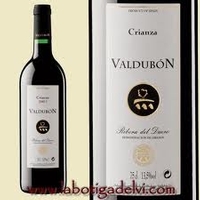(Robert Whitley’s Creators Syndicate Wine Talk column for this week.)
I had just put the Sommelier Challenge to bed and posted the results on the website when I decided to announce the biggest winners on Twitter.
A few tweets into it, and I had a query that surprised me. Someone wanted to know why we published the medal-winning wines, but not the wines that failed to impress. To me, the answer is obvious. The medal-winning wines are the recommendations of the professional judges who evaluated the entries. Publishing the names of wines that failed to win a medal might unnecessarily embarrass the winery that submitted the entry. Nobody is served by that.
 Wines that fail to win a medal are not necessarily bad wines. No doubt some were poorly made, but in many cases, a wine simply doesn’t perform well because it’s going through a stage of its evolution that is not particularly flattering. Young wines are like that. Sometimes the fruit shows, sometimes it doesn’t. Sometimes the tannins seem to be supple and nicely integrated; sometimes they are hard or aggressive.
Wines that fail to win a medal are not necessarily bad wines. No doubt some were poorly made, but in many cases, a wine simply doesn’t perform well because it’s going through a stage of its evolution that is not particularly flattering. Young wines are like that. Sometimes the fruit shows, sometimes it doesn’t. Sometimes the tannins seem to be supple and nicely integrated; sometimes they are hard or aggressive.
As the Twitter query unfolded, the question of the consumer benefit came up. Wouldn’t it be useful — the question was asked — if the consumer knew all of the wines entered to better understand the framework of the evaluation? Good question. It would be useful if the wine competition were a horse race: with one winner, a second-place finisher, and so on through the entire field of horses.
That’s not how a wine competition works. At the wine competitions I manage (five major international events) and those I have judged, such as the Concours Mondial in Brussels, each wine is treated as a stand-alone entity and evaluated on its merits. The wines only "compete" if they advance to what my wine competitions call the "sweepstakes" round, where best of class and best of show awards are determined.
At that point, a wine has already received whatever medal the judges believe it deserves. In theory, a gold-medal wine should be of a certain quality whether there were 300 wines or two wines entered in its class. Wines are not graded on a curve, so the "framework" question is irrelevant.
The benefit to the consumer, of course, is that he or she can piggyback the preferences of well-qualified wine judges when making wine-buying decisions. The Sommelier Challenge is judged exclusively by professional sommeliers. All of the Sommelier Challenge results are available on the web at SommelierChallenge.com.
A few of the highlights, from my perspective:
 Sommeliers are always on the lookout for well-balanced, food friendly wines, which is what they came up with in their 2010 Wine of the Year. That distinction went to a wine from Spain’s Ribera del Duero district, which is 100 percent Tempranillo. The overwhelming favorite of the dozen sommeliers who joined in the evaluation was the 2003 Valdubon Crianza Ribera del Duero, $18.
Sommeliers are always on the lookout for well-balanced, food friendly wines, which is what they came up with in their 2010 Wine of the Year. That distinction went to a wine from Spain’s Ribera del Duero district, which is 100 percent Tempranillo. The overwhelming favorite of the dozen sommeliers who joined in the evaluation was the 2003 Valdubon Crianza Ribera del Duero, $18.
Value was hardly the only consideration over the weekend, for the judges made the pricy Delille Cellars 2006 Grand Ciel Cabernet Sauvignon ($135) from Washington’s Red Mountain AVA their top vote-getting Cabernet.
Washington also produced the best of class Bordeaux blend, the Steppe Cellars 2007 Artemisia ($27) from Columbia Valley.
This is basically a Cab-Merlot blend with a few other grape varieties thrown in.
The award for Best of Show white wine confirmed something we already knew: Mendocino County’s Anderson Valley is perhaps California’s sweet spot for Alsatian whites or any aromatic white grape. The honor went to the 2009 Navarro Vineyards Gewurztraminer, $19. Navarro’s Gewurz is dry, well balanced and true to type. And it’s not the first time this exceptional winery has won a major competition award with one of its white wines.
Chardonnay doesn’t seem to get much love these days in wine competition sweepstakes voting, but that doesn’t mean there are no good Chardonnays entered. B.R. Cohn’s 2008 Sangiacomo Vineyard Chardonnay, Carneros ($29) won best of class Chardonnay, and it is truly a lovely wine.
Carneros also scored with Gloria Ferrer taking Best of Show sparkling wine with its non-vintage Va de Vi ($22), an extra-dry bubbly that offers seductive aromas of white peach and tropical fruit. Gloria Ferrer is an old hand at winning sweepstakes awards, most recently with its Royal Cuvee and Carneros Cuvee blends.
Best of Show red wine, of course, was the Valdubon Crianza that was voted Wine of the Year. Europe also produced other strong contenders for best red wine, including the delicious 2006 Quinta da Zaralhoa Douro DOC Reserva ($20) from Portugal. Another wine from Spain, the Morlanda 2004 Crianca Priorat DOQ ($48), had good support in the final round of voting for best red wine.
Email comments to Robert Whitley at whitleyonwine@yahoo.com.
8
